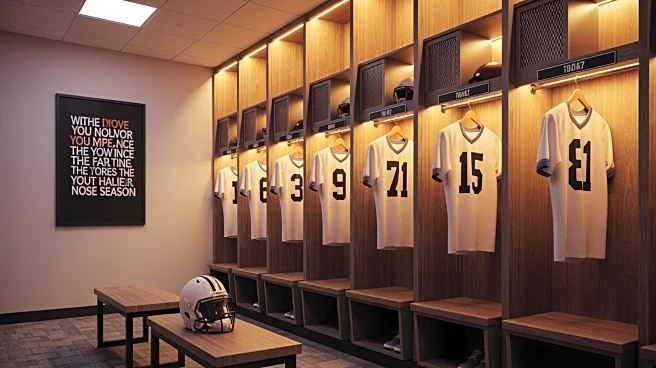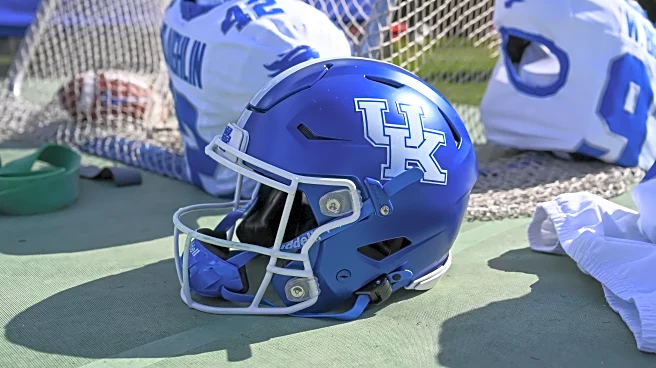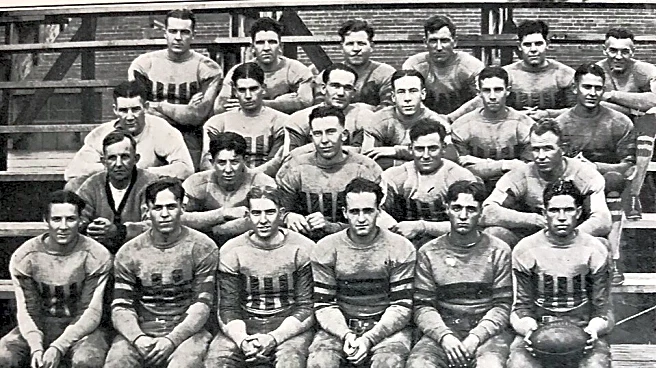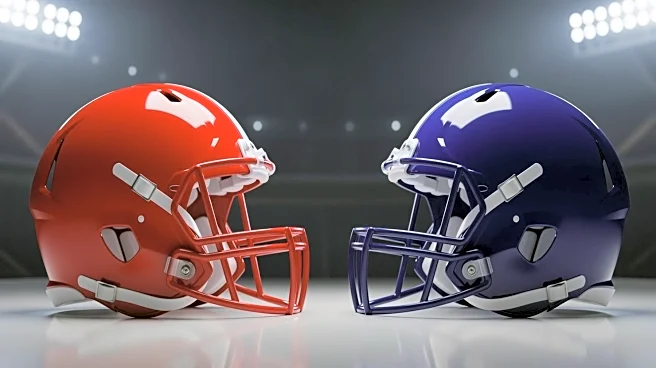What's Happening?
The Colorado Buffaloes, led by Coach Deion Sanders, faced a decline in viewership during their recent game against the Iowa State Cyclones, which they won 24-17. The game attracted 1.4 million viewers,
marking one of the least-viewed games since Sanders took over the program in 2023. Despite being among the top eight viewed games of the week, the Buffaloes' match was overshadowed by other high-profile college football games, including the Red River Rivalry between Texas Longhorns and Oklahoma Sooners, and a matchup between Indiana Hoosiers and Oregon Ducks. The absence of key players like Shedeur Sanders and Travis Hunter has contributed to the program's reduced prominence in college football.
Why It's Important?
The decline in viewership for the Colorado Buffaloes highlights the shifting dynamics in college football, where high-profile games and teams with star players tend to attract more attention. This trend could impact the Buffaloes' visibility and influence in the sport, affecting recruitment and sponsorship opportunities. As other storylines and teams gain traction, Coach Sanders' program may need to adapt to maintain its relevance and appeal to fans and stakeholders. The situation underscores the competitive nature of college football, where media coverage and public interest can significantly influence a program's success.
What's Next?
The Colorado Buffaloes may need to strategize on how to regain their position as a top story in college football. This could involve enhancing their roster, improving game performance, and leveraging media opportunities to attract more viewers. Coach Sanders' health situation and the team's performance in upcoming games will be crucial in determining their future trajectory. Additionally, the program might explore new marketing and engagement strategies to boost viewership and fan support.
Beyond the Headlines
The decline in viewership for the Colorado Buffaloes could have broader implications for college football, including the potential for increased competition among programs to secure media coverage and fan engagement. This situation may also prompt discussions on the sustainability of college football programs that rely heavily on star players for visibility. The evolving landscape could lead to shifts in how programs approach recruitment, marketing, and community engagement to ensure long-term success.












